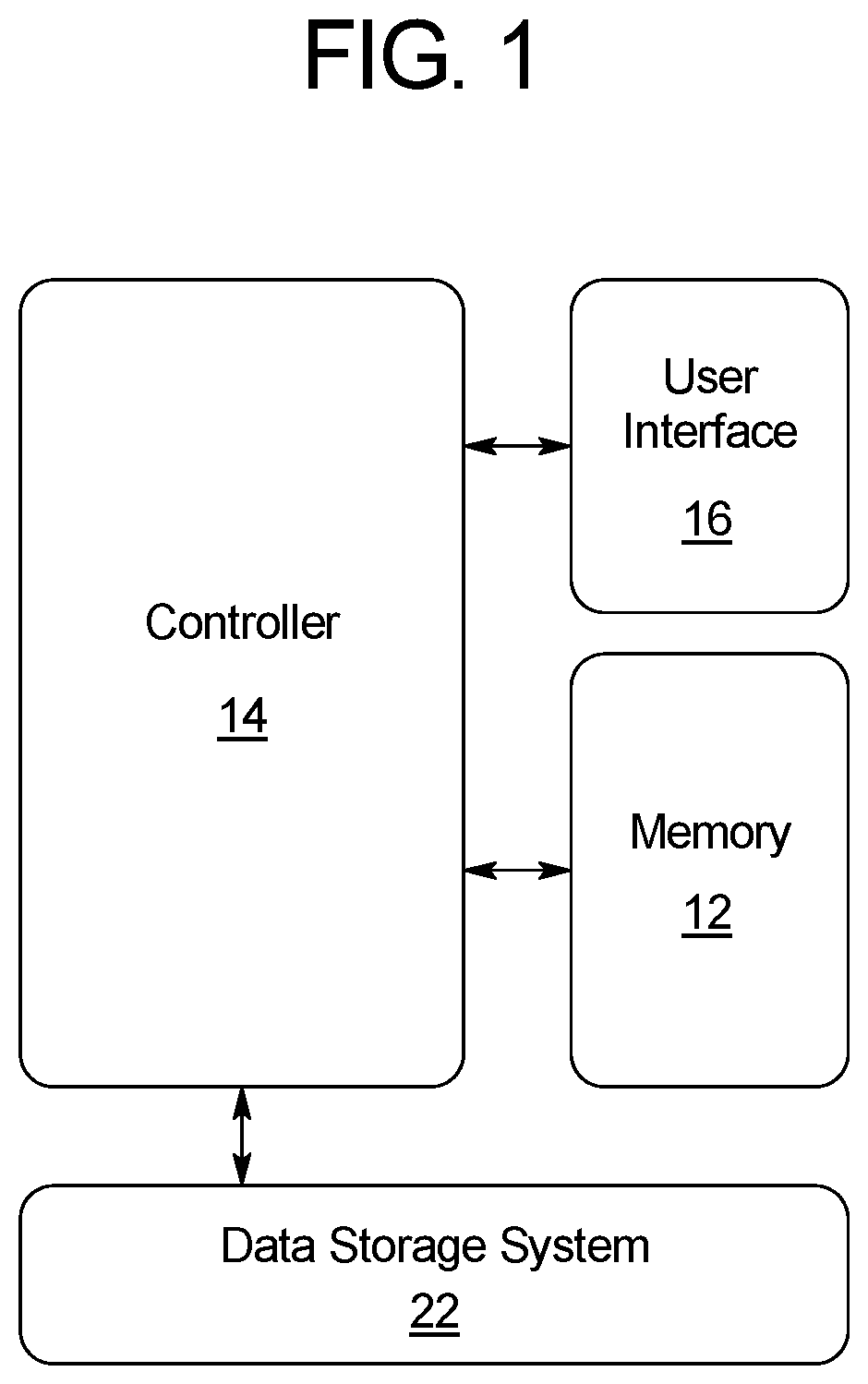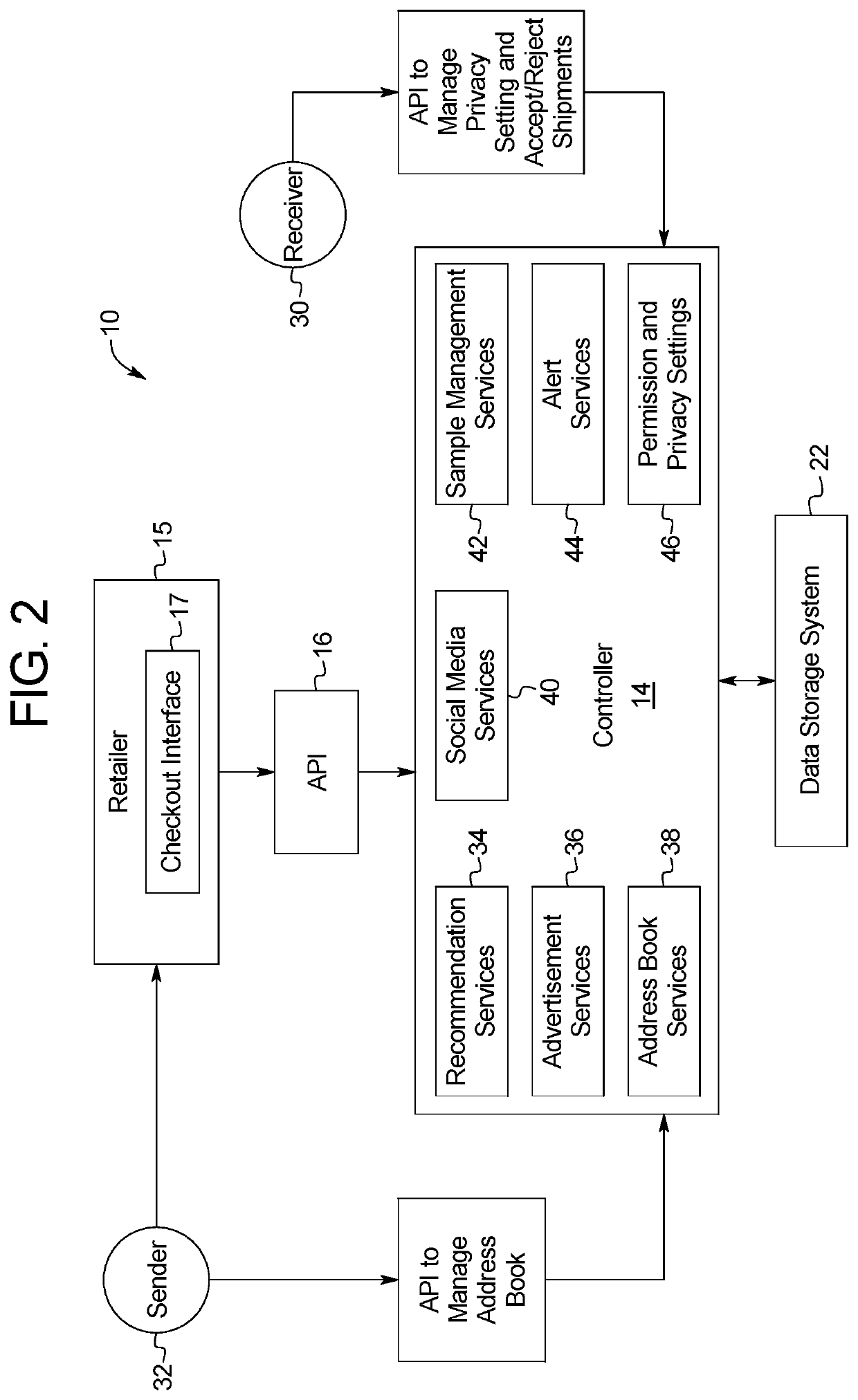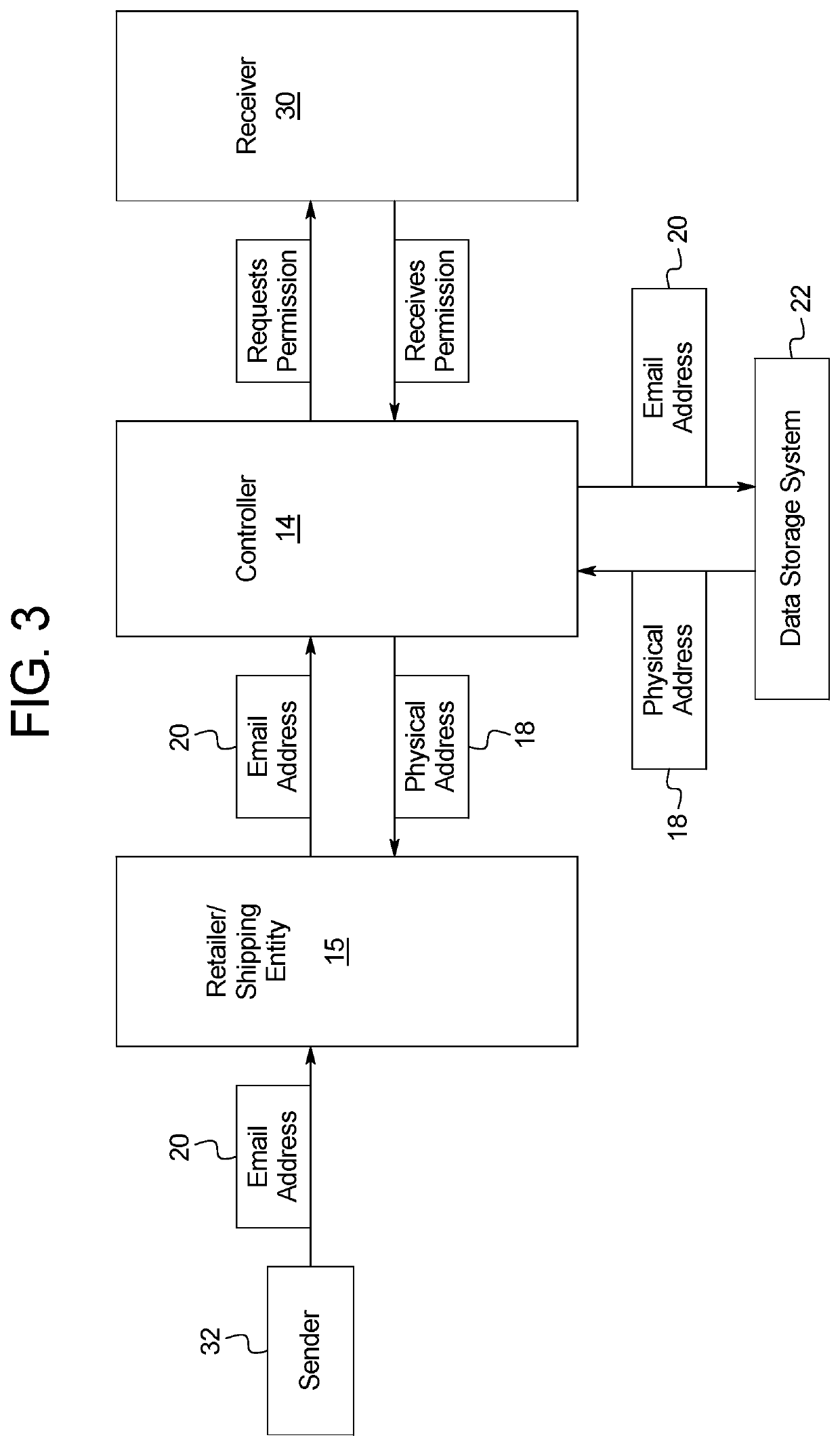Address exchange systems and methods
a technology of physical address exchange and system, applied in the field of system and method for online identification to a physical address exchange platform, can solve the problems of unfavorable sharing of identifiers such as physical addresses with unknown individuals, unfavorable privacy protection, and more likely the person will be subject to privacy challenges
- Summary
- Abstract
- Description
- Claims
- Application Information
AI Technical Summary
Benefits of technology
Problems solved by technology
Method used
Image
Examples
Embodiment Construction
[0082]Referring to FIGS. 1-9, the present application discloses an address exchange system that standardizes and globalizes a unique address mechanism for all enabling transactions and communications between users without the disclosure of the recipient's physical mailing address to the sender. The address exchange system provides a unique digital identification, such as a phone number or an email address, that becomes the primary, universal identification of each user. By replacing the physical mailing with a digital identification, the system simplifies transactions between two or more parties by enabling the shipment and / or purchase of products without needing a traditional mailing or GPS address. As technology has evolved to make international transactions more common, the use of a digital identification helps to avoid problems arising from multiple language and address formatting inconsistences as well as problems arising in communities experiencing significant growth with chan...
PUM
 Login to View More
Login to View More Abstract
Description
Claims
Application Information
 Login to View More
Login to View More - R&D
- Intellectual Property
- Life Sciences
- Materials
- Tech Scout
- Unparalleled Data Quality
- Higher Quality Content
- 60% Fewer Hallucinations
Browse by: Latest US Patents, China's latest patents, Technical Efficacy Thesaurus, Application Domain, Technology Topic, Popular Technical Reports.
© 2025 PatSnap. All rights reserved.Legal|Privacy policy|Modern Slavery Act Transparency Statement|Sitemap|About US| Contact US: help@patsnap.com



